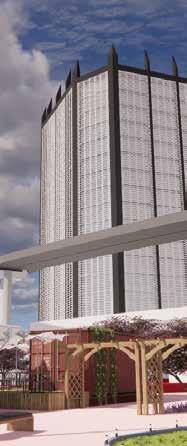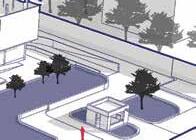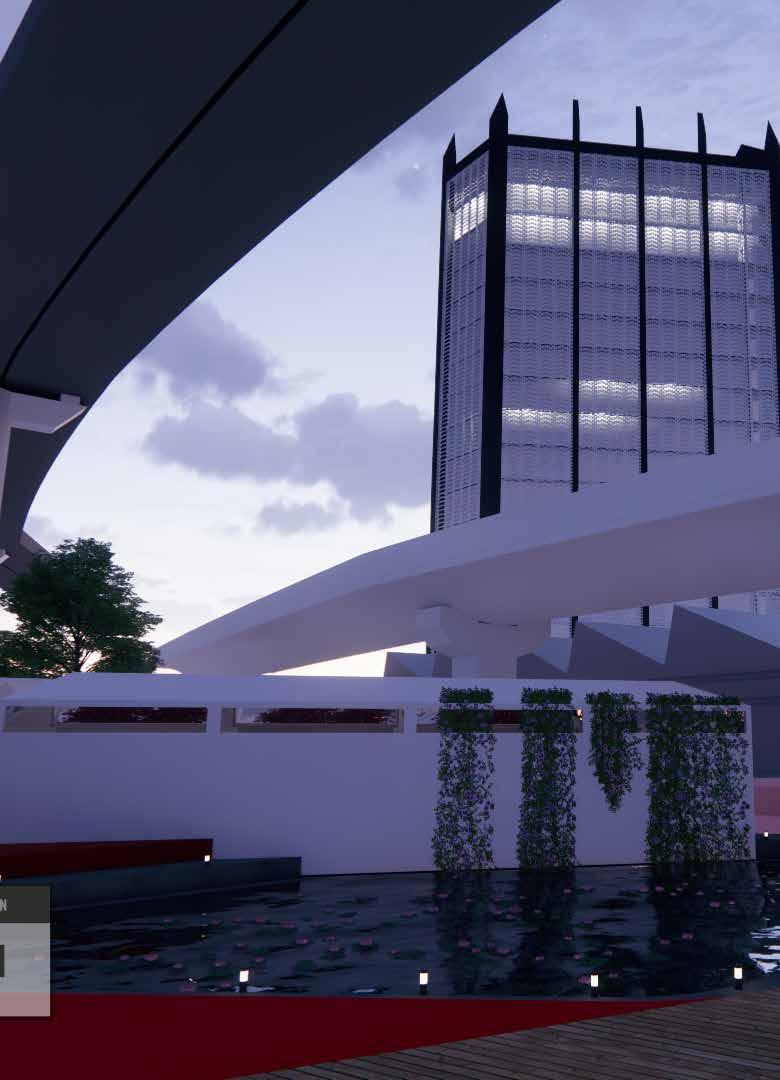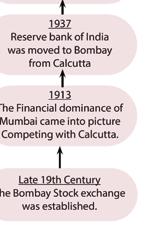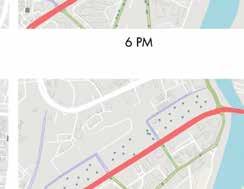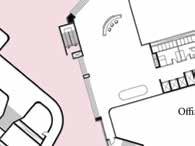PROFFESIONAL EXP.
Ravi Group(2024): Liasoning/Design Architect
-Co-ordinating with various planning authorities on the execution side.
-Designing DCR and UDCPR Compliant residential projects primarily in Mumbai and Mira-Road.
-Visiting the sites to ensure implementation of W.D.
-Drafting up technical and WD for on-going and new projects of the company.
Studio Indus(2023): Design Architect
-Designing several Commercial and Residential projects as an Architect and Interior Designer.
-Making detailed W.D. and furniture drawings to be shared with vendors.
-Regular discussion with the client regarding the execution and maintaing expectations.
-Co-ordinating with vendors and suppliers to ensure timely completion of project
INGRAIN(2022): Intern
-Worked as an intern and assisted designing Commercial projects for various hig-end developers and businesses.
- Working through covid and learning to communicate and execute designs from remote
ACADEMIC EXP.
2013-2018:
-THESIS: Languages Of India
-An attempt to understand the complexity and diversity of linguistic traditions of india in an attemp to continue its prosperous usage and preservation through architectural interventions.
THE UNCHARTED HAMLET OF JHUNTAMARA
- Co-Author and Editor
INTACH Award of Excellence (National level)
-Heritage Awards For Documentation of Unprotected Heritage.
ANDC Design Competition
-Design according to current Urban landscape and according to COVID-19 Norms
ANDC Design Competition
-Design Public gathering spaces in a rural setting with respect to local norms and customs.
Submitted in fulfillment of requirements for ‘Bachelor Of Architecture’
-Aasim
Allauddin Shaikh
(MU-1859)
RIZVI COLLEGE OF ARCHITCTURE 2022-2023
AASIM A. SHAIKH
There are nearly a thousand indeginous languages spoken, read or signed in India and most of them are falling out of use and are usually being replaced by English. This Study attempts to explore the multiple cause and effect of such a development throughout the country and attempts to understand if such languages can be saved, as developed languages are considered hallmarks of great culture being a source of knowledge and literature. Through development of spaces and programs we aim to facilitate the continuation of such languages and help them revive and transition into the new age.So that they may continue to inspire the coming generation and also help promote the rich and varied culture of this country.
Languages spoken in India belong to several language families, the major ones being the Indo-European languages spoken by 78.05% of Indians and the Dravidian languages spoken by 19.64% of Indians, both families together are sometimes known as Indic languages.Languages spoken by the remaining 2.31% of the population belong to the Austroasiatic, Sino–Tibetan, Tai–Kadai and a few other minor language families and isolates guages spoken in India belong to several language families, the major ones being the Indo-European languages spoken by 78.05% of Indians and the Dravidian languages spoken by 19.64% of Indians, both families together are sometimes known as Indic languages. Languages spoken by the remaining 2.31% of the population belong to the Austroasiatic, Sino–Tibetan, Tai–Kadai and a few other minor language families and isolates

There are nearly a thousand indeginous languages spoken, read or signed in India and most of them are falling out of use and are usually being replaced by English. This Study attempts to explore the multiple cause and effect of such a development throughout the country and attempts to understand if such languages can be saved, as developed languages are considered hallmarks of great culture being a source of knowledge and literature. Through development of spaces and programs we aim to facilitate the continuation of such languages and help them revive and transition into the new age.So that they may continue to inspire the coming generation and also help promote the rich and varied culture of this country.
AASIM A. SHAIKH
Strenghts
-The site is very well connected to different parts of the city of delhi via multiple modes of transportation.
-The site is located in the vicinity of several prominent educational institutes.
-The site is relatively untouched and is an open parcel of land
Weakness
-The site is located next to an air force base so there may be some constraints regarding construction and design
-Due to being near a congested and heavy movement of vehicles there is a problem of sound pollution
Opportunity
-There is a new metro-line that is going to pass in front of the site and a stop is planned very close to the site.
-The program happening on the site could be integrated with multiple educational institutes which are situated around the site.
Threats
-The site lies at the edge of an encroached residential area so there can be potential threat of encroachment.
-There is a possibility of disuse and neglect on the site due present circumstan
Located in the Tughlakabad Area of the South delhi district the site is located near educational institutes and the program which involves study, research and promotion of languages suits the particular context of the site.
BUILT-UNBUILT
LAND USE
VEGETATION
-The land use around Tughlaqabad, Delhi is a mix of residential, industrial, and commercial activities. The area is predominantly characterized by residential settlements, with some industrial and commercial zones.
- The land use has evolved over the years due to urbanization and development, resulting in a complex interplay between human settlement, infrastructure, and economic activities. Conservation and sustainable land use planning efforts are underway to ensure the balanced development of the region while preserving its historical and ecological significance.
-The vegetation around Tughlaqabad, Delhi is characterized by a mix of natural and cultivated plant species. The area features a variety of trees, shrubs, and grasses, including neem, babul, keekar, and wild grasses. Due to urbanization and human activity, the vegetation in Tughlaqabad has been impacted, with some areas showing signs of degradation and encroachment.
INDIA DELHI
SOUTH DELHI
TUGHLAQABAD
DETAILS
It is the intent to design space that fascilitates the learning documenting and understaing the various languiages of india while simultaneously promoting their usage in very-day life in academia on the streets so that the barrier of language towards learning ceases to exist. Through variopus functions such as literature and reading but also through arts such as drama and music and food also providing enough facilities for researchers and students to give a space where they may read and learn in an inclusive environment. Also the institute would also be affiliated to other educational institutions around the site such as the Jamia Hamdard and Kendriya Vidyalaya.
SECTION F-F’
SECTION C-C’
SECTION B-B’
DETAILS
-The space directly in front of the library has ample space
-The ground floor has a large greenscape with a courtyard
-The floor also has space for administrative offices and the language centre.
-The back building also holds a projection room and archives
OPEN-THEATRE
CANTEEN
AASIM A. SHAIKH
space for movment and is set off from the main road so as to reduce disturbance of noise, courtyard in the centre, a space which can be used as performance space for theatre and other activities.
computer room, along with that the ground floor also has a canteen for all the people who enter
archives library which can store a considerable amount of film reels and digital storage.
DETAILS
It is the intent to design space that fascilitates the learning documenting and understaing the various languiages of india while simultaneously promoting their usage in very-day life in academia on the streets so that the barrier of language towards learning ceases to exist. Through variopus functions such as literature and reading but also through arts such as drama and music and food also providing enough facilities for researchers and students to give a space where they may read and learn in an inclusive environment. Also the institute would also be affiliated to other educational institutions around the site such as the Jamia Hamdard and Kendriya Vidyalaya.
SECTION D-D’
SECTION A-A’
SECTION F-F’
LIBRARY
DETAILS
-The program’s most important place is the library whivh cultures in india. The reading room is spread across 1000
-The grand staircase is also a part of the reading room and two major trees already located on the site.
-Reading room is connected via a bridge to the classrooms researchers and readers alike to see older collections and
-The reading room is double storey high which will make
STAIRCASE
whivh is located on the first floor. The library contains a collection of books of various languages and 1000 Sq.M. of the library which is divided into multiple sections based on languages and genres.
and a place that is simultaneouly an outside place and an inside place due to it being built around
classrooms and an archive room which contains books films and records. Which can be accessed by and works.
make the space airy and the openings in the roof will allow hot air to escape easily.
DETAIL (A)
DETAIL (A)
DETAIL (B)
DETAIL (C)
DETAIL (B)
DETAIL (C)
DETAILS
-Using a portal frame to prop up a hip roof in the previously mentioned library project offers several benefits, including efficient space utilization, structural stability, ample natural light, and ventilation through clerestory windows, creating an inviting and functional space that enhances the aesthetics and functionality of the library while maintaining structural integrity.
-Reinforced Concrete (RC) Roof: Reinforced concrete is a widely used material for constructing roofs in Delhi due to its durability, strength, and ability to withstand the hot and dry climate. RC roofs can be cast in situ or precast, and can be designed to accommodate the hip roof configuration.
-Synthetic Roofing Materials: Synthetic roofing materials, such as synthetic slate or composite shingles, can also be considered for a hip roof in Delhi. These materials offer good durability, lower maintenance requirements, and can mimic the appearance of natural materials like slate or wood shakes.
JHUNTAMARA
(WINNER National Award for Documentation of Heritage)
AASIM A. SHAIKH
“The documentation took place in Jhuntamara, a small village in Odisha. The trip was to understand the rural building construction technlogies and document them.
The Hamlet had a life which was in stark contrast to the city gave us a parralel view of undertanding the built form.
There was a language barrier between us and the locals, yet we were able to understnd each other and observe their way of building homes.
The documentation of this project won the INTACH Heritage Awards for Excellence in Documentation Of Unprotected Heritage.”
“Traversing through the thick sub-tropical forest we arrive at a clearing. In the distance we see the lush green mountains and rolling fields, and before us lay a quiet little hamlet. This settlement of people was quiet literally in the middle of nowhere.
The place had frozen in time and had shunned the idea of development. It was far cry from the hustle and bustle of towns and cities. A secluded tribal community surviving in this ever-changing world without losing grips on their roots. It was a world of its own, it was Jhuntamara.
Walking through the dusty streets of this little settlement we had a glimpse in the lives of these people. looking closer and conversing with them gave us a much broader perspective of the village and their lives.”
“The design brief states that a villa is to be designed on an open plot with an area of 875 Sq. m. of which 40 percent of the area is to be used as the built-up area, the villa is to be a G+2.
This residential structure has multiple bedrooms a large open kitchen and servants quarter. Along with spaces for other activities.
The aim of this project was to understand the various structural components and design with technical considerations costruction details in all the levels from Sub-Surface to the Top of the structure.
This exercise was an attempt to combine unique design ideas, understanding technicalities and executing them.
“The documentation took place in Jhuntamara, a small village in Odisha. The trip was to understand the rural building construction technlogies and document them.
The Hamlet had a life which was in stark contrast to the city gave us a parralel view of undertanding the built form.
There was a language barrier between us and the locals, yet we were able to understnd each other and observe their way of building homes.
The documentation of this project won the INTACH Heritage Awards for Excellence in Documentation Of Unprotected Heritage”
Mumbai is one of the most populous cities in the world. The reason for this manifold, but employment too plays a mazjor role in attracting people to this cultural conglomerate of a city. it is also the commercial powerhouse of India.
With the site located in one of the city’s prominent business district the site and the institutions that will function will be an engine of growth and provide livelihood to many.
It being strategically located on the arterial road and on a junction it will have a great influx of pedestrians who may access the public areas of the ifc. Meanwhile the business of office buildings have a different entrance for the peope working in those office.
The convention centre is strategically cocated in the functional centre as it serves bpoth a public and private funcyions with entrance on multiple sides for all of its functions.
The Auditorium has a seating capacity of nearly 450 people. and can be used for multiple purposes, including shows theatre conferences and other functions.
OFFICE
The offices in the tower can accomodate upto 2500 persons and designed for offices of multiple sizes and use.
The tower is 16 storey high and the offices are of multiple configuration that can accomodate offices of multiple small and medium sizes.
The offices can be accesed through the pedestrian entry or through a vehicle which is located on the Kanzul-Imam road.
PUBLIC PLAZA
The public plaza is part of the IFC which will be open to the general public. It will include multiple shops and multiple and unique softscaape and hardscape elements in its design.
INGRAIN
RESIDENTIAL PROJECT AT MAGATHANE
During my internship at Ingrain i worked on several projects including the one below wjich was for Chandak developers and is at Magathane. I helped design the model and worked on sev-
Tower “A”
The Auditorium has a seating capacity of nearly 450 people. and can be used for multiple purposes, including shows theatre conferences and other functions.
Tower “B”
The Auditorium has a seating capacity of nearly 450 people. and can be used for multiple purposes, including shows theatre conferences and other functions.
Blender Test: 011 (Raju Soda Shop |
Inspired by a real shop in Pune i saw in a post by @beyond_heritage i wanted to design a scene reflecting the local architecture.
)
Blender Test:007 (Onwards |
)
For this one i took inspiration from 90s anime and video montage of car chase, played around a lot with the shader editor to get cel shading and color right.
I tested cloth simulations and a mixamo rigged model of a person laying moaning to create the visuals of someone going through a nighmare. Took much more time than anticipated to bake the sim, but am happy with the result.
Inspired by a real shop in Pune i saw in a post by @beyond_heritage i wanted to design a scene reflecting the local architecture.
Blender Test:009 (The Lamp |
Blender Test:006 (Fever Dream










